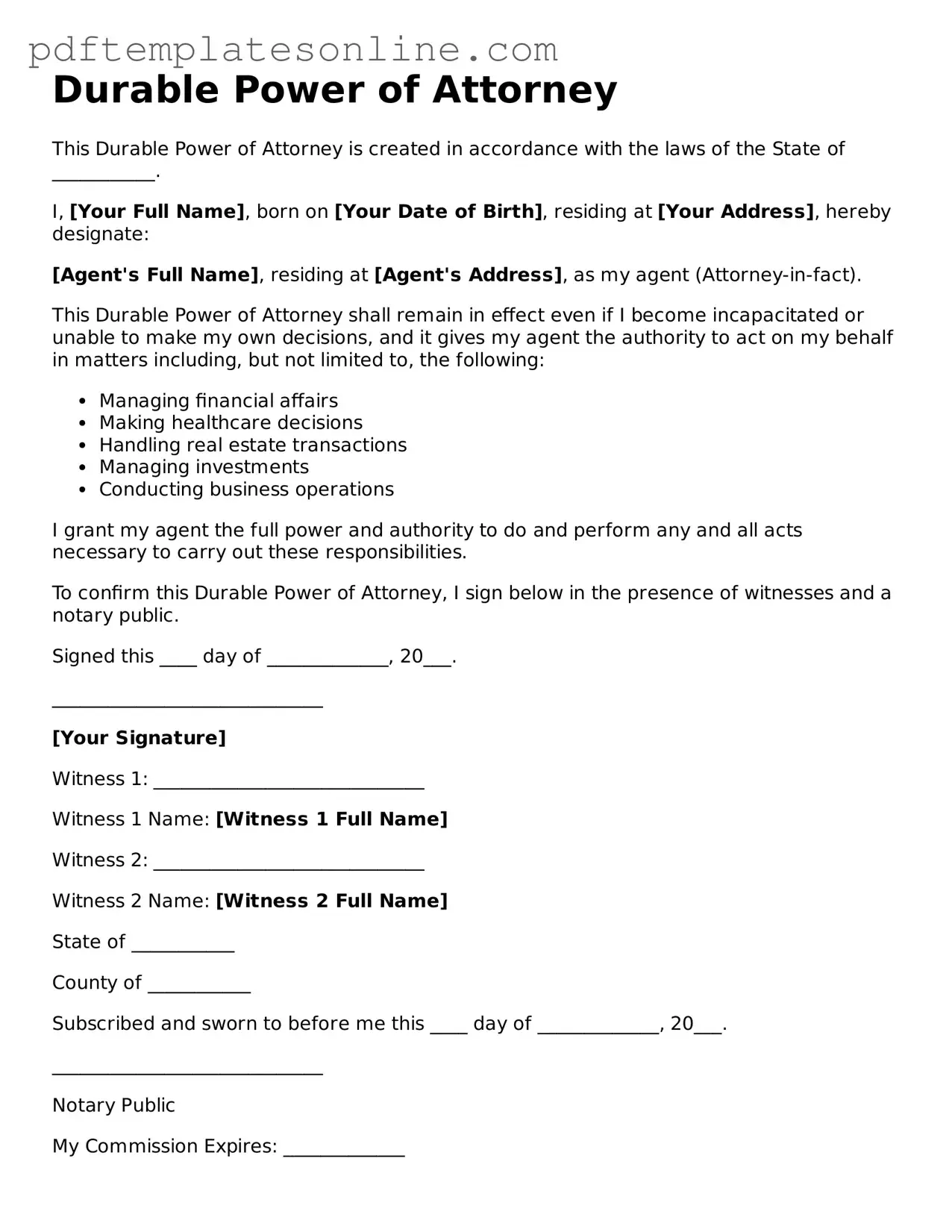Filling out a Durable Power of Attorney (DPOA) form is a significant step in planning for the future. However, many individuals make common mistakes that can lead to complications down the line. Understanding these pitfalls can help ensure that your wishes are honored and that the document serves its intended purpose.
One frequent error is failing to specify the powers granted to the agent. A DPOA can cover a wide range of financial and legal decisions, but if the document is vague, it may create confusion. Clearly outlining the specific powers you wish to grant can prevent misunderstandings and ensure that your agent knows exactly what actions they can take on your behalf.
Another mistake is neglecting to choose a reliable and trustworthy agent. This person will have significant authority over your affairs, so selecting someone who you believe will act in your best interest is crucial. Friends or family members may seem like a good choice, but it’s essential to consider their ability to handle the responsibilities that come with this role.
Some individuals overlook the importance of discussing their intentions with the chosen agent. It’s not enough to simply name someone; open communication about your wishes and expectations is vital. This conversation can help ensure that your agent understands your values and priorities, which can guide their decisions if the time comes for them to act on your behalf.
Additionally, many people forget to sign and date the DPOA form correctly. A missing signature or an incorrect date can render the document invalid. Always review the form carefully to ensure that all required signatures are present and that they are dated properly, as this can be critical in legal situations.
Another common oversight is failing to have the document notarized or witnessed when required. While not all states require notarization, having a notary or witnesses can add an extra layer of authenticity and help prevent challenges to the document’s validity. Checking your state’s requirements is essential to ensure compliance.
Finally, individuals often neglect to update their DPOA as circumstances change. Life events such as marriage, divorce, or the death of a chosen agent can necessitate changes to the document. Regularly reviewing and updating your DPOA ensures that it remains relevant and reflects your current wishes.
By being aware of these common mistakes, individuals can take proactive steps to create a Durable Power of Attorney that truly reflects their intentions and protects their interests. Thoughtful consideration and careful planning can help ensure that your wishes are respected, even when you are unable to communicate them yourself.
